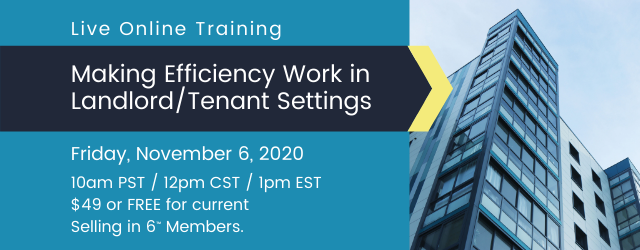Imagine you're going to sell an energy efficiency upgrade to a homeowner, and you're going to save them some serious money. How do you make that compelling and emotional? As true sales professionals know, the promise of saving money rarely spurs a prospect to take action.

Try this instead. Ask yourself, “How many hours does this prospect have to work to pay for the wasted portion of their utility bill?” Then you do the math. Let’s say you’re going to save a customer $100 a month and they're in a 40% combined federal and state tax bracket. How long would they have to work in order to make that money assuming they earn $50 an hour?
The answer: they would have to work 40 hours. Now that’s an eye-opener that should stir an emotional reaction, don’t you think? When you migrate the conversation to focus on how hard your prospect has to work in a typical year only to turn around and squander the after-tax fruits of his/her labor on an unnecessarily high utility bill, you’ll gain an immediate negotiating advantage.
You may be wondering how we derived that “40 hours” figure... Here’s how: $100 utility savings per month equates to $1,200 per year. At a 40% combined tax bracket, you would calculate the before-tax income needed by dividing that $1,200 by (1 minus 40%), which equates to $2,000. The prospect has to work 40 hours at $50 per hour to make that $2,000 before-tax and keep $1,200 after-tax (which is then promptly wasted on utilities). Hence, the “40 hours” estimate.
This is the power of what we call Digits-To-Widgets™. By using your customer’s jargon and yardsticks, you can speak their language, and not only that – you also give them a solid example of how you can eliminate overpaying thanks to a sensible application of your solution. Remember, people don’t make decisions. They make comparisons. When you compare how hard they have to work in a typical year to earn the money they then turn around and waste on utilities, you’ll make a much more compelling case.







